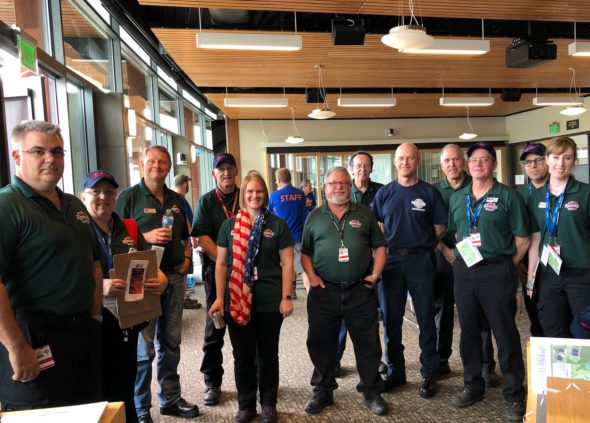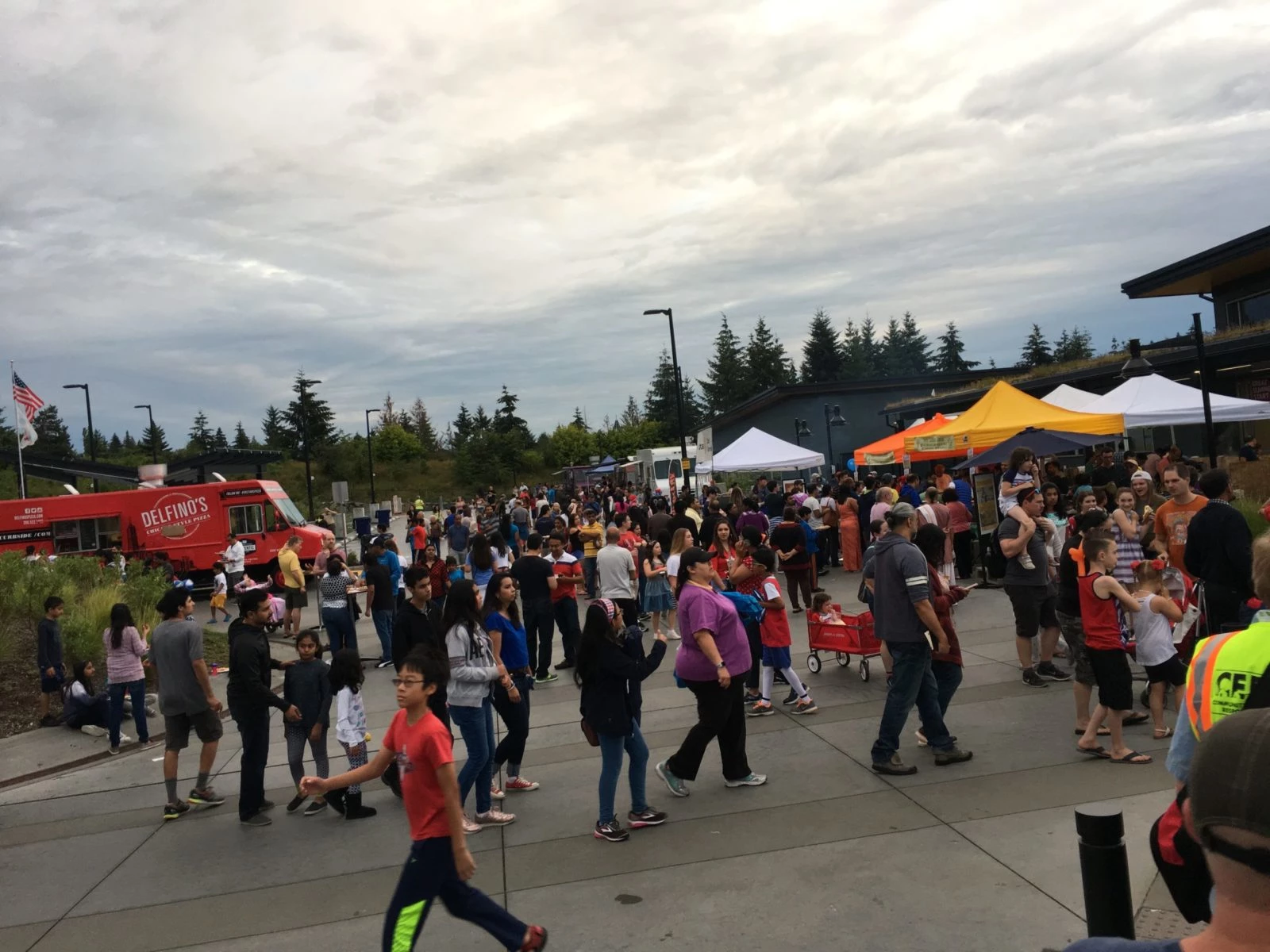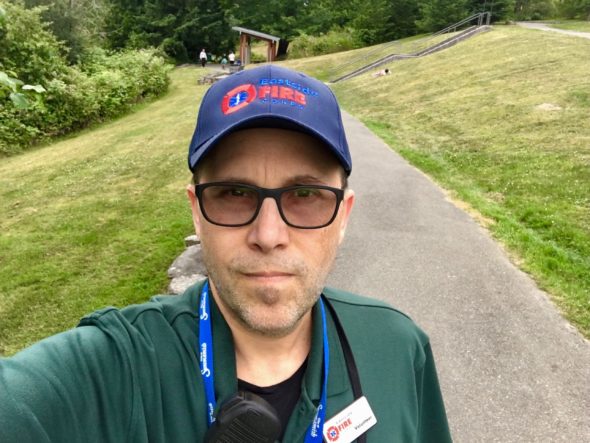
Part of the vetting for Eastside Firecorps included taking the first set of FEMA‘s Incident Command System (ICS) courses online:
- ICS 100 – Introduction to Incident Command System
- ICS 200 – ICS for Single Resources and Initial Action Incidents
- ICS 700 Introduction to the National Incident Management System
- ICS 800 National Response Framework
The overarching concept behind these is to put forth an organizational framework for resource management. As someone who’s been in the software industry, the antithesis of organization, an open mind was needed. For example, there are forms. Lots, and lots of forms, that are used to document everything. And it’s good they do.
I’d taken these in early 2017. While I did volunteer at the Seattle Marathon last year, I hadn’t actually been involved in an event that employed this idea until the July 4th holiday, when I was part of EFR’s event management for the City of Sammamish Fourth of July celebration.
Before the event, there’s a summary email of general logistics. For example:
The biggest change at this point is that we all need to arrive by 1600 rather than 1700 as previously stated. This will allow us to sign-in, get radios distributed, move equipment, set-up the 1st Aid station canopies and be done prior to our briefing with BC Huffman.
Please review the attached ICS documents, particularly the ICS-204 for a better look at the overall schedule, assignments, etc.
EF&R is providing:
- 1 Career Engine & Aid Car
- 1 Volunteer Aid Car (Air Unit Volunteers)
- 2 First Aid canopies (upper and lower commons) with Jump Kits and PAEDs
- 1 Gator
The city is planning to provide us with one 4 seat golf cart, tables, chairs, trash bins, ice and water.
We will all be using 800MHz radios (no HAM gear required)
I am still waiting on specific parking info as there is construction on SE 4th that will eliminate the parking we have had in previous years. If you can carpool – even better. Park at Station #82 and drive in as few cars as possible. I will leave that part up to you all.
Dress for Fire Corps volunteers:
Green Polo, black pants, black shoes/boots, cap and pin and of course, your ID badge. It is forecasted to be cool in the evening but hopefully no rain at this point. Bring outer-wear as appropriate for changing conditions.
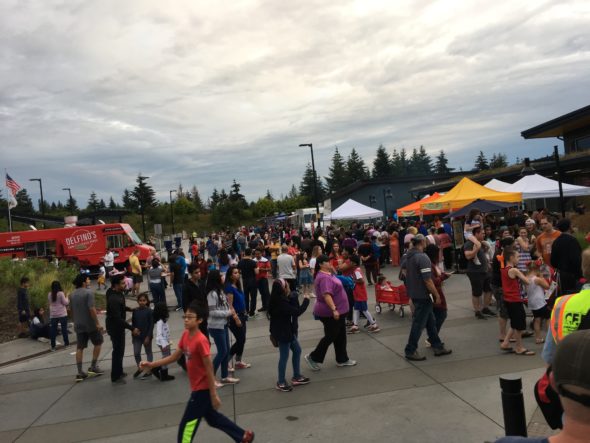
The ICS 204 contained a gloriously detailed list of assignments, resources, contacts, timeline, and limits of scope. For example, I was assigned to a team of three (an EMT, a CERT member, and the radio guy), roving around the Sammamish Commons. It is small part of a much larger document, “Event Action Plan,” the city puts together with each group. (Since these were leftover, I snagged one for my nerdy edification.) Other departments, such as the police, also had packets that outlined complementary functions, including dress code, placement of cones. I am impressed at the level of planning that goes into events like this.
Our role was spelled out as follows:
- Provide medical support to the extent of your credentialing
- Log all incidents (including minor issues – band-aids, ice, minor sprains, etc.)
- Contact Command for any medical situations other than those above to ensure Career crew response, AMB, etc. BC will initiate calls with NORCOM, etc. (see Special Instructions Below)
- Provide situational awareness, crowd monitoring, etc.
- Ensure safety during the event and on incidents
- Request additional resources as needed through Command
- Engage with the attendees as applicable
- Assist when requested by Command with Lost Child/Parent situations
Fire Corps EMTs will provide attendee care for minor issues only, including those listed in the previous section. Should a patient require BLS or ALS care; you are to alert Command immediately with a short report and follow the BCs instructions. Maintain patient care until Career BLS crews arrive. The BC will initiate the call, assign resources and transport as necessary. Fire Corps EMT are to resume their assigned tasks as soon as possible
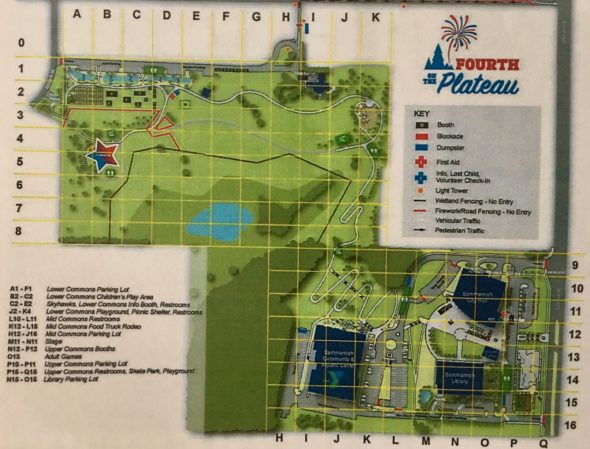
The initial briefing reinforced the timeline in the ICS204, 4pm – 11:45pm shift. We were then issued equipment (800MHz radios, lanyards with a volunteer badge, clipboards, more forms), met some luminaries, had some opportunity to mingle with the other groups and grab a snack.
With the fireworks not starting until 10pm, we had five hours to wander around the facility as crowds streamed in. The folks working the EOC (Emergency Operations Center) wanted to test equipment, and did some sample radio checkins. It was nice that we had a grid map of the Sammamish Commons to practice our situational awareness. This was my first “real” time using an 800MHz trunked radio. The primary difference is these you press transmit and wait for the beep before speaking. Also the radios are massively heavier than my handheld.
We had the opportunity to chat with one of the pyrotechnics guys and learned they have 12 sequences of 32 groups of fireworks each. They set up everything to detonate over an unpopulated area (though ash and smoke blow around). The fireworks were to begin at 10pm on the dot, with a five minute warning shot, run for ~22 minutes. They were prompt and also well-organized.
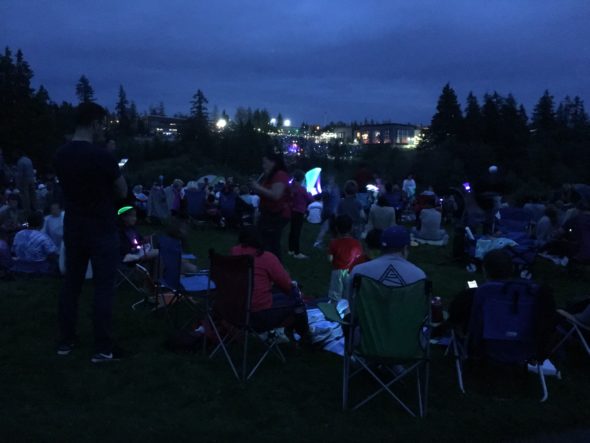
An estimated 15,000 people streamed in over the next four hours. What was as amazing was seeing them exit peacefully much quicker. I fielded a few questions like “Is there an ATM?” and “Where is the empanada food truck?” (which, to the amazement of my team, I knew the answer to off the top of my head). Otherwise, we were not involved in any incidence or accidents, an outcome I was totally fine with.
